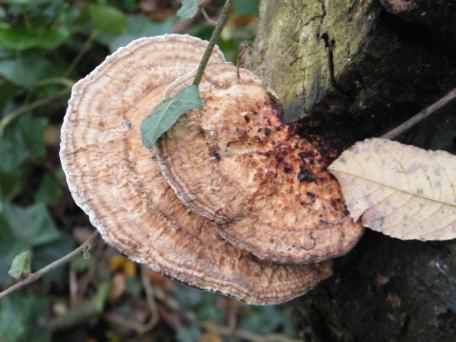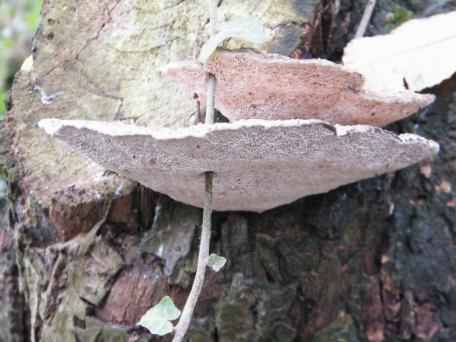
Photos ©2013–
Click any photo for a larger image


Photos ©2013–
Click any photo for a larger image

Alder Bracket - Inonotus radiatus
Family - Hymenochaetaceae
Synonyms - Boletus radiatus, Strahliger Schillerporling, Polyporus radiatus
A bracket fungus associated with dead or dying Alders but also found occasionally on Birch, Beech and rarely other hardwood trees. Widespread and locally common in Britain, Ireland, Europe and parts of North America. Semicircular or kidney shaped, tiered, it is a light reddish brown or Apricot coloured to start with, 2–10cm (0.8–4in) across, 1–2cm (in) thick, with reddish droplets near the margin. It slowly matures turning brown and eventually almost black, with a pale rounded margin that becomes sharper. New fruiting bodies are usually seen from June to September, whilst the mature (almost black) ones may be seen at anytime. The mycelium work their way into the tree through damage or injuries to the bark and proceed to decompose the heart wood resulting in White Rot.
BCP do not advise or recommend that Alder Bracket – Inonotus radiatus is eaten or used as an herbal remedy. Alder Bracket is not edible.
Similar to the Oak Bracket – Pseudoinonotus dryadeus which produces larger brackets and exudes dark honey coloured droplets. It is mainly found on the roots and lower trunk of various Oaks and does not usually produce tiers of fruiting bodies.
Site design ©1999– Brickfields Country Park - Privacy -